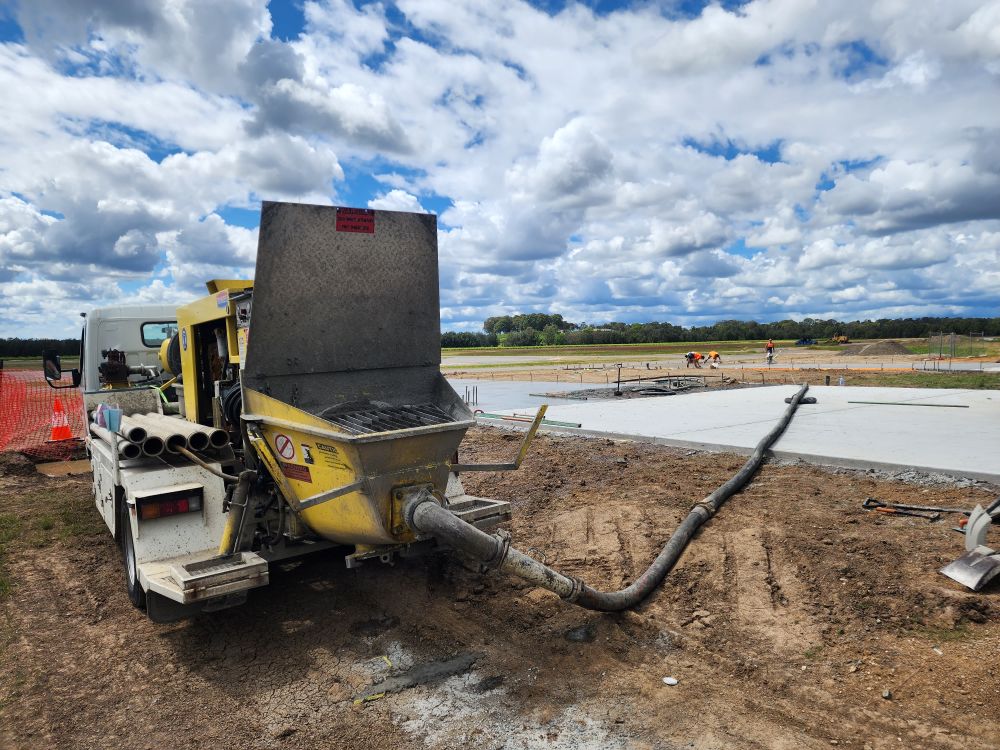Key Factors to Consider When Choosing Between Line Pump and Boom Pump Hire
To make a well-informed decision regarding the most appropriate concrete pump for your construction project, it is vital to grasp the fundamental distinctions between line pumps and boom pumps. Line pumps are particularly beneficial for residential projects and locations with difficult accessibility, whereas boom pumps are engineered to manage high-volume concrete pours and efficiently cover extensive distances. When opting for a pump, it is crucial to evaluate key elements such as site accessibility, the size of the pour, and the required delivery speed. By meticulously assessing these components, you can confidently select the pump that aligns with your specific project needs.

Discover the Benefits of Using Line Pumps for Your Concrete Projects
Line pumps are specifically designed to efficiently transport concrete through an interconnected network of steel pipes or flexible hoses. Their design makes them especially advantageous for residential construction sites, private backyards, footpaths, and other areas where accessibility is a challenge. The compact nature and quick setup of these pumps make them an ideal choice for smaller pours, enabling you to improve efficiency without sacrificing quality. By selecting line pumps, you can significantly minimise reliance on barrows and reduce labour costs on projects where a boom truck may struggle to access the pour site, thus streamlining your workflow and conserving both time and resources effectively.
Enhance Project Efficiency with Line Pumps in Space-Constrained Environments
In scenarios where space limitations exist, line pumps present a dependable solution for the transportation of concrete through flexible hoses. These pumps are commonly utilised by construction teams for residential slabs, foundations, and smaller pours that larger boom trucks find difficult to access. The rapid setup time and lower operational costs associated with line pumps make them an exceptional choice for projects in tight spaces, such as narrow driveways and busy streets. Choosing a line pump allows your project to progress seamlessly, helping you avoid the delays and complications that frequently arise from using larger machinery in confined areas.
Recognising Ideal Scenarios for the Utilisation of Boom Pumps
Boom pumps are mounted on trucks and feature extendable arms capable of reaching over structures, into foundations, or to elevated areas within formwork. This functionality makes them ideally suited for commercial sites, expansive slabs, or any high-volume pours where efficiency is paramount. The use of a boom pump leads to significant time savings, as operators can use remote controls for precise placement of concrete, which not only reduces labour costs but also diminishes material waste. If your project necessitates a substantial volume of concrete and extensive reach, a boom pump is undoubtedly the most effective tool to meet your requirements efficiently.
Crucial Guidelines for Selecting the Optimal Concrete Pump for Your Specific Project
- For small to mid-sized pours: Choose a line pump to take advantage of its efficiency and cost-saving benefits.
- For large slabs or commercial projects: Always select a boom pump to effectively manage the necessary volume.
- In confined job sites: A line pump is the best solution for areas where boom pumps cannot operate effectively.
- When needing to reach over structures: A boom pump can cover considerable distances quickly and efficiently.
Make Informed Choices with Hunter Concrete Pumps for Optimal Project Outcomes
Begin your selection process by thoroughly evaluating your site conditions. If access is limited or if the pour is relatively small, a line pump is typically the most efficient and cost-effective option available. However, for larger projects involving multi-storey buildings, extensive infrastructure work, or heavy pours, a boom pump excels in delivering higher volumes of concrete swiftly, effectively eliminating the need for excessive handling of materials.
In the Hunter Valley and Newcastle regions, we frequently observe line pumps being employed for projects such as driveways, foundations, and pool constructions. Conversely, boom pumps are often preferred for tasks that require a high volume of concrete or vertical reach, including bridge decks, multi-storey buildings, and industrial pads. By understanding these specific applications, you can make the most informed decision regarding your concrete pumping needs.
The Article: Line Pump vs Boom Pump: Choosing the Best for Your Build first appeared on https://writebuff.com
The Article Line Pump vs Boom Pump: Which Is Best for Your Project? Was Found On https://limitsofstrategy.com
The Article Line Pump vs Boom Pump: Choosing the Right Option for You found first on https://electroquench.com

